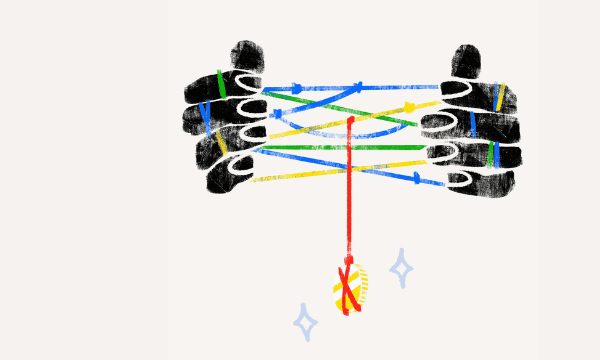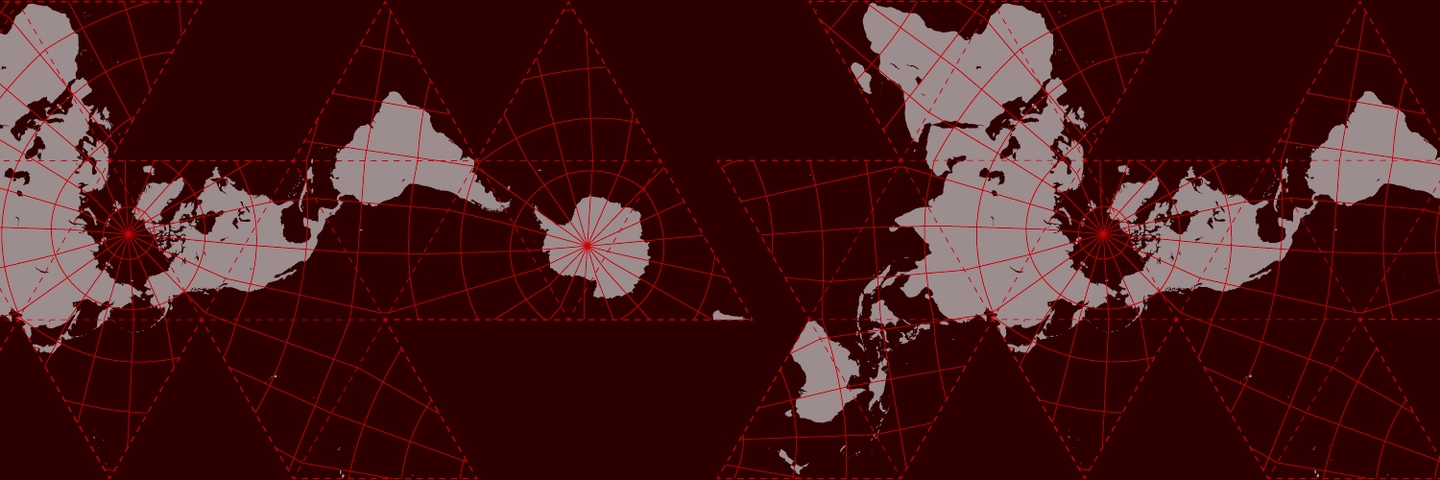
This essay is part of the “Debt Justice Agenda” series of Progressive International’s Debt Justice Blueprint.
My father used to tell a rather gross joke, the origins of which elude me, but it must have been popular at a time when spittoons were still common (unthinkable in the time of Covid-19). In a betting game, the contestants agree that the loser will sip from a spittoon. When the game is up, the loser takes the spittoon and empties it out completely. Asked why he did it, he replies: “Because everything hangs on a thread.”
As with spit, so with debt. For convenience, one may depict a lending relation as a bilateral contract between a creditor and a debtor. These two-party links are indeed the basic building blocks of the global credit system. However, they do not exist in isolation. The lender and borrower in every link are typically tied to other lenders and borrowers. My liabilities are your assets and your liabilities are someone else’s assets. Every individual, every household, every firm, every money or mutual fund, and of course, every bank, is a bank in this sense.
It follows that a credit-based financial system is a system of interlocking balance sheets. It is held together by multiple threads that intersect at crucial nodes, major dealer banks and ultimately the central banks of the leading economies with the US Federal Reserve at the very top of the system. The system may not hang on a single thread, but most threads intersect somewhere, forming a system that may not be fully integrated but is impossible to fully disentangle.
We might all be banks in a metaphorical sense, yet not all banks are equal. Credit-based financial systems are “essentially hierarchical”, as Perry Mehrling suggested, though the degrees of banks’ inequality is a matter of social choice. Participants in the credit hierarchy differ from each other along several dimensions: the amount and value of assets they hold; the amount of liabilities they have amassed relative to assets; the terms of their debt contracts, including their duration, interest rates, penalties for late or non-payment, the kind and amount of collateral that debtors have to put up, and so forth.
These contractual terms are often said to account for the risk of lending to different types of borrowers. In practice, they are often labels attached to entire communities, even countries, that reflect race, location, vocation, and similar markers that are convenient for lenders to use as a proxy, but are often highly discriminatory and rarely reflect the creditworthiness of individual borrowers.
Apart from contractual provisions, the most powerful indicator for where one is located in the hierarchy of interdependent credit relations is access to liquidity in times of distress. Liquidity is the lifeline of all credit systems. Having access to liquidity support especially in times of crisis is a matter of economic life and death.
When borrowers and lenders are hit by an exogenous shock, their chance of survival depends on their location in the hierarchy of credit relations. The general principle that contracts should be enforced as written places the burden squarely on debtors to perform — irrespective of the reasons that led to the default. Only in exceptional circumstances can they make ‘force majeure’ or ‘frustration’ defenses, which free them from their contractual obligations.
And yet, behind the formal equality of legal relations, hierarchy rears its head: Some will be better able to survive not only the Covid pandemic itself, but also the “legal pandemic” that is likely to follow on its heels: The wave of enforcement actions brought by creditors once the temporal moratoria have been lifted.
Financial stress can be mitigated by augmenting the value of assets on the left hand side of the balance sheet, or by reducing the liabilities on the right hand side. In the midst of a financial crisis, private players quickly become unwilling to offer much support to others. The reason is that extending such support might put their own survival at stake.
This is where states and their central banks come in. Unlike private players they can manipulate their own survival constraint. Not all are equally equipped to do so, which is another way of saying that some states are truly sovereign in the monetary sense while others look more like private companies.
If history is any guide, debtors on the periphery will be held to the terms of their contracts as originally written — and if they are unable to pay up will witness their collateral, their homes, cars, or personal guarantees made by family members, being seized. Those closer to the apex will have a greater survival chance. Many of them benefited from continuous central bank support of the value of their assets throughout the crisis. After their own financial stress has been mitigated by the social resources that states and central banks mobilize, they will now try to make a killing by enforcing against borrowers further down in the hierarchy — pushing the stress outwards, towards the periphery.
Using the structure laid out above as a template, we could have predicted fairly accurately the effects of the Covid-pandemic. Support has been more robust at the apex of the system, both globally and within countries, than on its periphery, as central banks stepped in once again as dealers of last resort. Relative to the 2008 crisis, more support has been made available to households and small firms in the form of temporary income support (furlough payments, unemployment insurance, government checks) as well as temporary liquidity support, such as eviction moratoria.
The temporary nature of most interventions on the periphery indicates where the fault lines will lie in the ensuing legal pandemic. Financial intermediaries are unlikely to give households and firms much slack just because they themselves benefited handsomely from the relaxation of their own commitments thanks to central bank interventions or direct subsidies. Once the restrictions are lifted, they will turn around and enforce their legal claims against their own debtors, and will employ the courts, bailiffs and collection agencies to ensure that the accumulated debt plus compounded interest will be collected.
For debtors, these claims will be difficult to meet — unless they had the great fortune of keeping their jobs or landing even better ones during or immediately after the pandemic. A wave of defaults and non-performing loans is therefore likely. While on average, household savings rates have increased during the pandemic in the US or the UK, this will not help households that exhausted their savings within months and were able to keep afloat only because of the emergency measures adopted during the pandemic.
Standard economic life-saving measures are also not easily available for small firms and poor households. Reorganization in bankruptcy has become more widely available throughout the world and for them has created a viable option to reset their economic lives, it is not a realistic option for those on the periphery: They lack access to bridge finance to reassure creditors that they can back on their feet as well as assets against which new creditors will lend.
In short, the legal structure of credit markets will likely create a wave of distress even as other parts of the economy might come back roaring as some estimates at least for the US now predict. Stress on the periphery is often neglected, because it does not endanger the system. Yet, in an interdependent system, contagion is likely. When households and small firms default, their own creditors will come under stress and they in turn will pass the buck to the next level in the hierarchy. They too might default, pushing the stress further up in the system.
All debt hangs on a thread and stress always pushes from the periphery to the core. Unless real debt relief is forthcoming especially for households and firms on the periphery, the Covid pandemic will linger long after the virus has been defeated or at least controlled, transmitted not by a virus but by legal commitments that were made before the outbreak of the pandemic. The transmission channel for this legal pandemic channel will be law, collateral and bankruptcy law in particular. The fact that it is legal does not make the legal pandemic less pernicious — especially in light of the fact that the ones at the core have benefited once more from greater elasticity of their own binding legal commitments thanks to state intervention.
Katharina Pistor is a member of the Progressive International Debt Justice Collective. Katharina Pistor is the Edwin B. Parker Professor of Comparative Law at Columbia Law School, where she teaches, corporations, law and development and law and finance in theory and practice.
Illustration by Namita Sunil. Namita is a New Delhi based illustrator and graphic artist.
From the Blueprint team at Progressive International
We live in a world of debt. The depth and breadth of global “debtification” is difficult to overstate. It is the primary contention of this collection that all these disparate dynamics — hedge funds raking in pandemic profits, students struggling to afford an education, micro-borrowers on the brink of bankruptcy — are different manifestations of the same basic structural mechanism at the heart of the global financial system: the endless cycle of privatized gains and socialized losses. Simply put, the rich get richer, while the poor, by design, remain poor.
The goal of this Collective is the goal of progressive movements around the world, to end that cycle. Read the full Debt Justice Blueprint here. If you’re interested in engaging with us, please write to Varsha Gandikota-Nellutla at [email protected].



